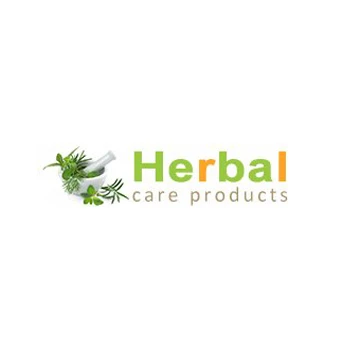Bronchiectasis, a chronic lung condition that causes the airways to widen and become scarred, has long been a challenging disease to manage. Characterized by persistent cough, excessive mucus production, and frequent lung infections, it affects millions worldwide. In 2025, a new era of therapies—both medical and holistic—are making significant strides in improving quality of life.

Understanding Bronchiectasis: A Brief Overview
Bronchiectasis is a chronic lung condition in which the airways (bronchi) become abnormally widened, leading to a buildup of mucus. This makes the lungs more vulnerable to infection and inflammation, causing repeated lung infections and long-term breathing problems.
Key Features:
- Persistent cough (often with phlegm)
- Shortness of breath
- Frequent chest infections
- Wheezing
- Fatigue
Causes:
- Past severe lung infections (like pneumonia or tuberculosis)
- Genetic conditions (e.g., cystic fibrosis)
- Autoimmune diseases
- Blocked airways (from a tumor or foreign object)
- Primary ciliary dyskinesia (a rare disorder affecting the lungs' cleaning mechanism)
Diagnosis:
- CT scan of the chest (gold standard)
- Chest X-ray
- Lung function tests
- Sputum culture
Treatment:
- Airway clearance techniques (physiotherapy)
- Bronchodilators and inhaled steroids
- Antibiotics for infections
- Vaccinations (to prevent flu or pneumonia)
- In severe cases, surgery or lung transplant may be needed
Bronchiectasis is not curable, but it can be managed to reduce symptoms and prevent complications.
1. Airway Clearance Devices (ACDs)
One of the most impactful therapies for bronchiectasis in 2025 is the advanced line of airway clearance devices. These devices, such as oscillatory positive expiratory pressure (OPEP) tools, help dislodge mucus from the lungs by creating vibrations during exhalation. New models are more portable, intelligent, and integrated with apps that track usage and effectiveness. Patients report fewer infections, less coughing, and better breathing.
Why it’s life-changing: Regular use of ACDs reduces hospitalizations and promotes daily independence.
2. Personalized Antibiotic Therapy
With advancements in genomic diagnostics and AI-driven health tech, physicians in 2025 can now tailor antibiotic regimens based on the specific bacteria colonizing a patient’s lungs. This personalized approach minimizes antibiotic resistance and enhances treatment outcomes.
Impact: Faster symptom relief, fewer side effects, and less antibiotic overuse—a critical factor in long-term management.
3. Natural Treatment for Bronchiectasis Through Herbal Medicine
As patients seek holistic care, Natural Treatment for Bronchiectasis has surged in popularity. Certain herbal remedies have shown potential in easing inflammation and supporting lung function. Commonly used Herbs Solutions By Nature
include:
- Licorice Root – Anti-inflammatory and expectorant.
- Turmeric – Contains curcumin, known for powerful anti-inflammatory properties.
- Ginger – Helps with mucus clearance and soothes the respiratory tract.
- Mullein Leaf – Traditionally used to relieve coughs and expel mucus.
When used under medical supervision, these natural remedies can complement conventional treatment effectively.
Life-changing potential: Herbal approaches offer gentle, supportive relief with fewer side effects.
4. Pulmonary Rehabilitation Programs
In 2025, pulmonary rehab is no longer just for COPD patients. Tailored programs for bronchiectasis include supervised exercise training, breathing exercises, nutritional advice, and psychological support. These programs have gone digital as well—tele-rehabilitation allows patients to access care from home.
Why it matters: Improved stamina, reduced breathlessness, and better overall lung function empower patients to live more actively.
5. Probiotics and Gut-Lung Axis Therapy
Research into the gut-lung axis has opened new doors in treating bronchiectasis. Gut microbiota play a crucial role in modulating the immune system. Probiotic therapy—using strains like Lactobacillus rhamnosus and Bifidobacterium longum—is emerging as a natural remedy for bronchiectasis, especially to prevent recurrent infections and inflammation.
How it’s changing lives: Probiotics offer a non-invasive, natural way to bolster immunity and reduce disease flare-ups.
6. High-Frequency Chest Wall Oscillation (HFCWO) Therapy
This therapy uses a vest that vibrates the chest wall at high frequencies, loosening mucus so it can be more easily expelled. The latest HFCWO vests are lightweight, Bluetooth-enabled, and customizable for each user.
Real-world impact: Improved airway clearance leads to fewer infections and a drastic improvement in quality of life.
7. Natural Remedies for Bronchiectasis: Nutritional Strategies
Dietary therapy is one of the most underrated Natural Remedies for Bronchiectasis. A diet rich in antioxidants, omega-3 fatty acids, and essential vitamins can reduce inflammation and support lung tissue repair. Key nutritional components include:
- Vitamin D – Boosts immunity.
- Vitamin C – Acts as an antioxidant and strengthens connective tissue.
- Omega-3 fatty acids – Found in flaxseed and fish oil, reduce lung inflammation.
- Magnesium – Essential for muscle function, including respiratory muscles.
Changing the game: Nutrition plans personalized to the patient’s needs are proving vital in long-term management.
8. Mind-Body Interventions: Yoga and Breathwork
Another important Natural Treatment for Bronchiectasis is mind-body therapy, especially yoga and pranayama (breath control). These practices improve lung capacity, reduce stress-induced flare-ups, and help clear mucus naturally. Modern virtual yoga programs now cater specifically to individuals with chronic respiratory issues.
Why it works: Reduced anxiety, better breathing, and enhanced immune regulation all contribute to a better prognosis.
9. Targeted Biologic Therapies
In 2025, monoclonal antibodies are being explored to treat specific immune pathways involved in bronchiectasis, particularly for patients with overlapping conditions like asthma or eosinophilic bronchitis. These drugs, such as mepolizumab or benralizumab, target inflammatory markers that worsen lung damage.
Effectiveness: Although still under observation for widespread bronchiectasis use, early adopters are reporting fewer exacerbations and improved lung function.
10. Home-Based Inhalation Therapy with Natural Solutions
Nebulizers are now being used at home with natural saline solutions and essential oils like eucalyptus or peppermint, which act as natural remedies for bronchiectasis by thinning mucus and clearing nasal passages. Some setups even include salt therapy (halotherapy), which has gained popularity in 2025 as a wellness-oriented approach.
Why this is powerful: Home inhalation provides convenience, comfort, and consistent relief—improving daily breathing function.
Integrating Natural Treatment for Bronchiectasis into a Holistic Care Plan
What makes 2025 truly revolutionary is the integration of natural and medical therapies into personalized treatment plans. Patients are no longer forced to choose between pharmaceutical and natural methods. Instead, they benefit from:
- Collaborative care teams including pulmonologists, naturopaths, and nutritionists.
- Digital tracking apps to monitor symptoms, medication, and natural remedy use.
- Education resources empowering patients to manage their condition effectively at home.
Natural treatments are now supported by better research, which allows them to be used with more confidence alongside conventional care.
Conclusion
As of 2025, the treatment landscape for bronchiectasis is more promising than ever. From cutting-edge biologics to deeply rooted natural remedies for bronchiectasis, patients now have more tools to control their symptoms and improve their quality of life. What’s particularly exciting is how the natural treatment for bronchiectasis is no longer seen as “alternative,” but as a respected part of an integrative, patient-centered care model.
With a proactive mindset, support from informed healthcare providers, and access to both medical and natural therapies, living well with bronchiectasis is not just possible—it’s happening every day.



